3D in Education
The US EdTech conference season kicks off at the start of the year with strong events in Florida and Texas. As usual, I found myself amply entertained at the FETC 2015 conference in Orlando (late January) and the TCEA conference in Austin (early February). I not only attended these huge events, I presented at both. Of course, I also spent considerable time crossing the exhibit halls. I would like to share some key observations related to the 3D presence and other display issues at these huge conferences, since these conferences tend to set the tone and lend a preview for what’s coming for educational technology in the U.S. Here are my thoughts about the FETC event in Orlando, now in its 35th year.
3D@FETC
More than 8500 educators plus thousands of vendors attended FETC 2015 in Orlando this year, and the venue was hopping with activity. Here are some of the most important gleanings:
- For the first time in its history, FETC offered a dedicated 3D track or theme for the conference. In the past, 3D presentations were rarely accepted. Now, they had their own track. As a result, seven sessions were offered in the 3D visualization realm. (I am not counting any sessions on 3D printing.)
- The 3D presence in the exhibit hall was also stronger than previous years, with seven 3D-related exhibitors in the stereo, rendered, or 3D + haptics arena. (Again, I am not counting any sessions on 3D printing.) The largest crowds stirred around the Sensavis, zSpace, and AVrover booths. Interest was high, and I even saw interested collegiate customers cut deals right on the exhibit floor for the impressive Sensavis content. Sensavis also introduced a second wave of new simulations for their already rich collection.
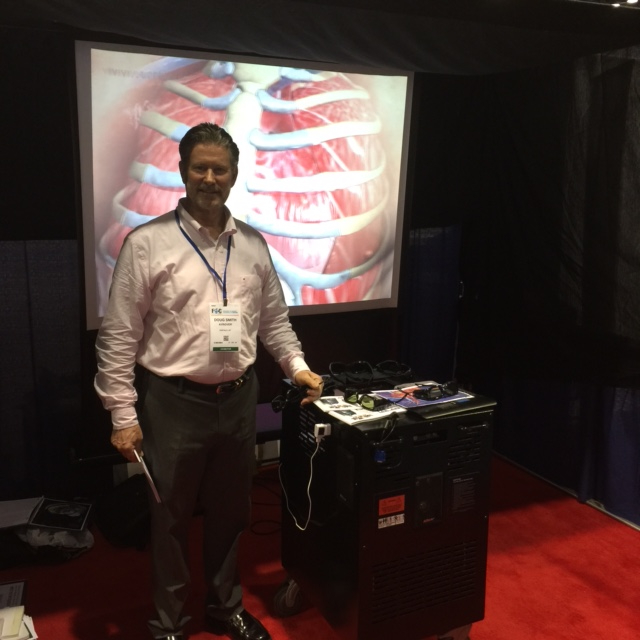 Doug Smith, AVrover CEO
Doug Smith, AVrover CEO
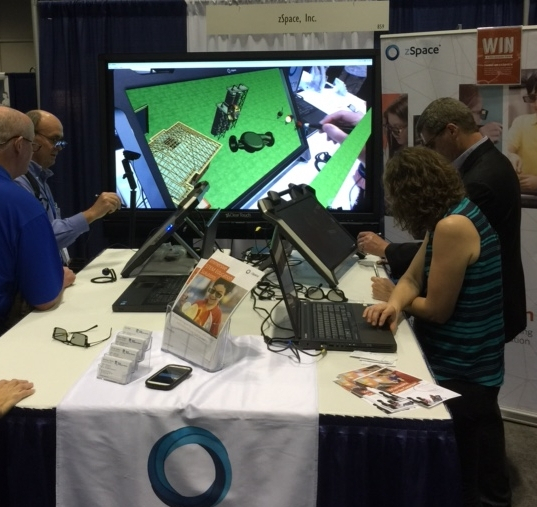 zSpace drew heavy crowds
zSpace drew heavy crowds
Sensavis featured its stellar content  More Sensavis content
More Sensavis content  Sensavis also rolled out their newest content at FETC
Sensavis also rolled out their newest content at FETC
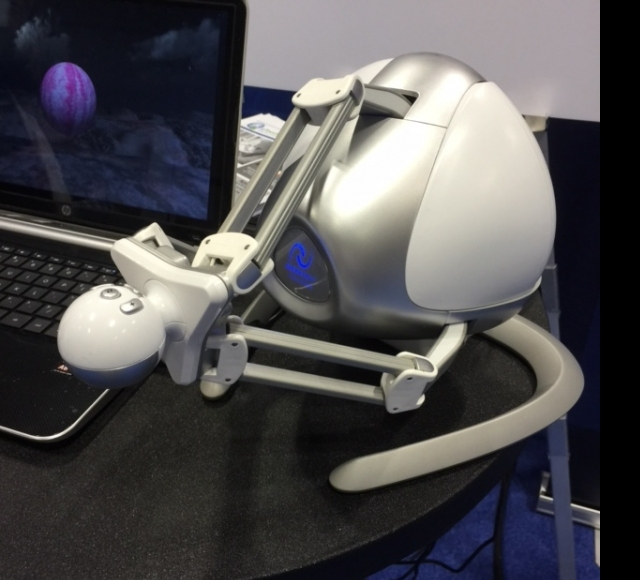 One vendor featured a haptic device that enables blind students to ‘feel’ 3D screen designs
One vendor featured a haptic device that enables blind students to ‘feel’ 3D screen designs
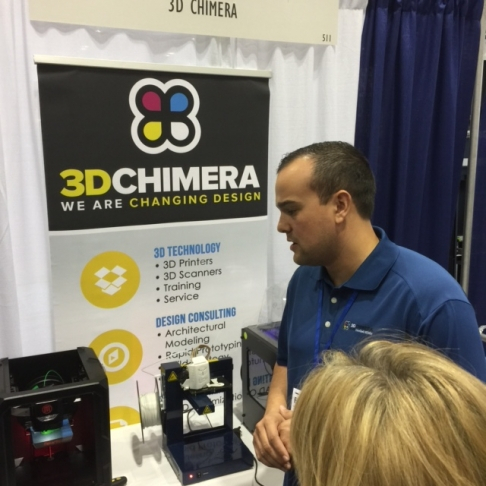 3DChimera, one of the many 3D printer exhibitors at FETC
3DChimera, one of the many 3D printer exhibitors at FETC
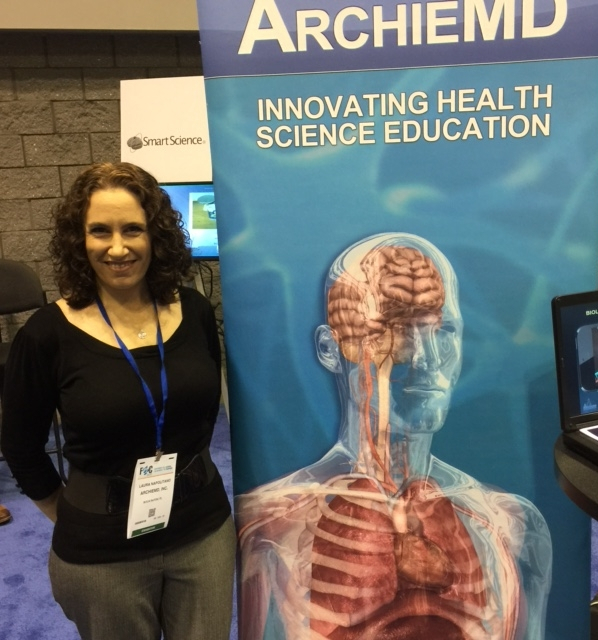 ArchieMD, one of the rendered 3D content providers exhibiting at FETC
ArchieMD, one of the rendered 3D content providers exhibiting at FETC
I conducted the first-ever 3D hands-on workshop at FETC to an enthusiastic group of K-16 educators, followed by a packed 3D Aspire session in the exhibit hall. Interest was high, eyes were wide open in delight and minds were racing with the possibilities. Since this is the first time 3D has inched out an authorized foothold at the FETC conference, I felt that the customers represented very fertile ground.
On a non-3D note
- The Great Recession is definitely over in US schools. They are starting to get some reasonable funding, turning positive after years of budgets cuts. (Remember that educational funding in the US is a lagging phenomenon, not a leading one – schools don’t really recover from a recession or feel safe to invest in technology until the year after funding is restored.)
- The conference markedly showed the glaring absence – for the first time – of the interactive white board (IWB) scene at an exhibit hall in the American market. Everyone noticed. Most of the IWB solutions that were still present were recessed away, co-located in partner booths.
Also, the number of booths exhibiting large instructional displays greatly outnumbered the instructional projector booths for the first time I can remember. I spoke with a few integrators, and these folks were hoping to strike it big like they did with the huge projector frenzy of the previous few years, only with displays. Is that a realistic expectation? More on that in a future article.-Len Scrogan

